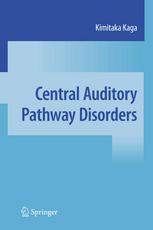

Most ebook files are in PDF format, so you can easily read them using various software such as Foxit Reader or directly on the Google Chrome browser.
Some ebook files are released by publishers in other formats such as .awz, .mobi, .epub, .fb2, etc. You may need to install specific software to read these formats on mobile/PC, such as Calibre.
Please read the tutorial at this link: https://ebookbell.com/faq
We offer FREE conversion to the popular formats you request; however, this may take some time. Therefore, right after payment, please email us, and we will try to provide the service as quickly as possible.
For some exceptional file formats or broken links (if any), please refrain from opening any disputes. Instead, email us first, and we will try to assist within a maximum of 6 hours.
EbookBell Team

4.3
18 reviewsBrain imaging and neurophysiological methods have been rapidly developed. The purpose of this book is to describe hearing problems which are caused by various kinds of brain diseases in central auditory pathway. Each topic is explained to use a lot of figures such as brain imaging and neurophysiological data comparing with neuropsychological tests. Readers will understand what happens in patients, when bilateral auditory nerve and auditory cortex are damaged in patients. Some patients can hear but cannot discriminate meanings of speech, music and environmental sounds. The author tries to explain why such a difference occurs.